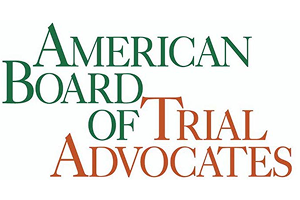- Free Consultation: (408) 289-1417 Tap Here To Call Us
NY Times investigative report on USTA
David W. Chen from the New York Times takes a look at the US Tennis Association and its failure to protect young athletes from a serial sexual predator. Read the USTA Burgos story in full. Here is a summary:
According to the New York Times, with growing cases of sexual misconduct between sports coaches and athletes, the United States Olympic Committee reported, in September 2014, that all sports, except tennis, had taken the initiative to protect athletes from abusers. At the time, Gordon Smith, the tennis association’s executive director, and chief operating officer, “objected to a ‘single mandatory national entity’ overseeing abuse cases across federations.” Adding that “a sport should be able to ‘opt-out of the centralized structure’ if it could police itself.”
The problem with self-policing has shown, however, that many abusers fall through the cracks. Just a few months before this 2014 meeting, a U.S.T.A. tennis coach, Normandie Burgos, had been arrested for abusing one of his athletes. Unfortunately, it was not his first time facing criminal charges for sexual misconduct. Source: New York Times
Burgos was a former college tennis player, then a teacher and coach at Tamalpais High School. He became a well-liked and supported tennis coach. In 2006, he was arrested after students reported that he had touched them inappropriately.
Even during his court case, Burgos received a lot of support from the tennis students’ families. Despite one student testifying during the 2010 trial that “Burgos had put a sleeping mask over his head and eyes, before massaging him and touching his penis,” the case ended in a mistrial.
According to the New York Times, Burgos, “became emboldened, prosecutors now say.” Source: New York Times
Burgos did not stop preying upon young and vulnerable athletes for sex. He started the Burgos Tennis Foundation, a non-profit with funding from the U.S.T.A.
He marketed himself “as being ‘certified as a trainer at the highest levels’ by the United States Professional Tennis Association.” He used his foundation as a way to attract young and underprivileged athletes. He groomed his athlete victims by giving them free lessons, equipment, and clothes, which made these athletes indebted to him. The New York Times also reported that Burgos would drive his favorite players to his condominium complex in Richmond.
In 2014, Burgos faced more criminal charges when one of his players told police he had been abused for nearly two years. Initially, the victim was thrilled to be playing on a tennis team, with official U.S.T.A. links. He was also getting more one-on-one practice with Burgos. Court documents reveal that “Burgos demanded oral copulation and other sex acts. The victim notified the police and U.S.T.A., but without evidence, the police released Burgos.
The next victim was Stevie Gould, another rising tennis athlete with hopes of playing tennis in college. Gould was abused for two years, “including at hotels during U.S.T.A. tournaments in other states.” For Gould, he began to see a pattern of Burgos’s grooming practices, including being given gifts of free equipment, lessons, and clothes too. He watched Burgos grooming other vulnerable children and decided to speak up. He reported the abuse in 2017. With police guidance, Gould used a hidden wire to record a confession from Burgos, which led to his arrest. In August 2019, Burgos received 255 years in prison for 60 counts of child molestation.
The New York Times reports that there is no public record of any action taken against Burgos by the U.S.T.A. Despite being a convicted sex offender, he is also not listed in the database of the U.S. Center for SafeSport. Since the U.S.T.A. wanted to self-police, they are accountable for abusive coaches. The U.S.T.A. did nothing against Burgos, allowing him to continue to abuse children.
Since SafeSport relies on reporting from each federation, the lack of reporting and disciplinary action from the U.S.T.A. resulted in Burgos falling through the cracks. When the New York Times spoke to Laurie Kimbrel, the Tamalpais school superintendent who pushed to revoke Burgos’s credentials, she is quoted as saying, “that no one in the tennis establishment contacted the district to vet Burgos after the well-publicized 2010 trial.” Source: New York Times







